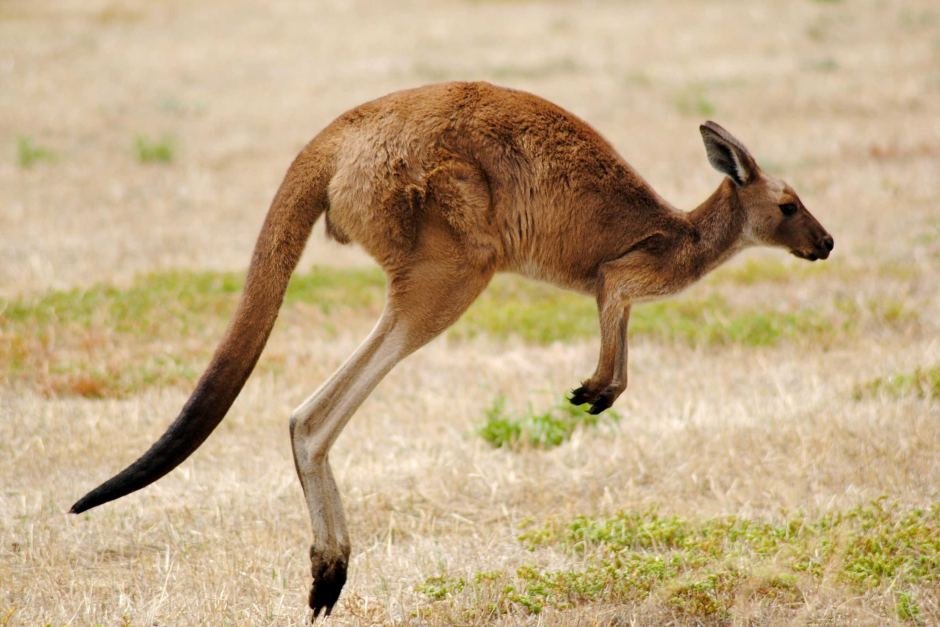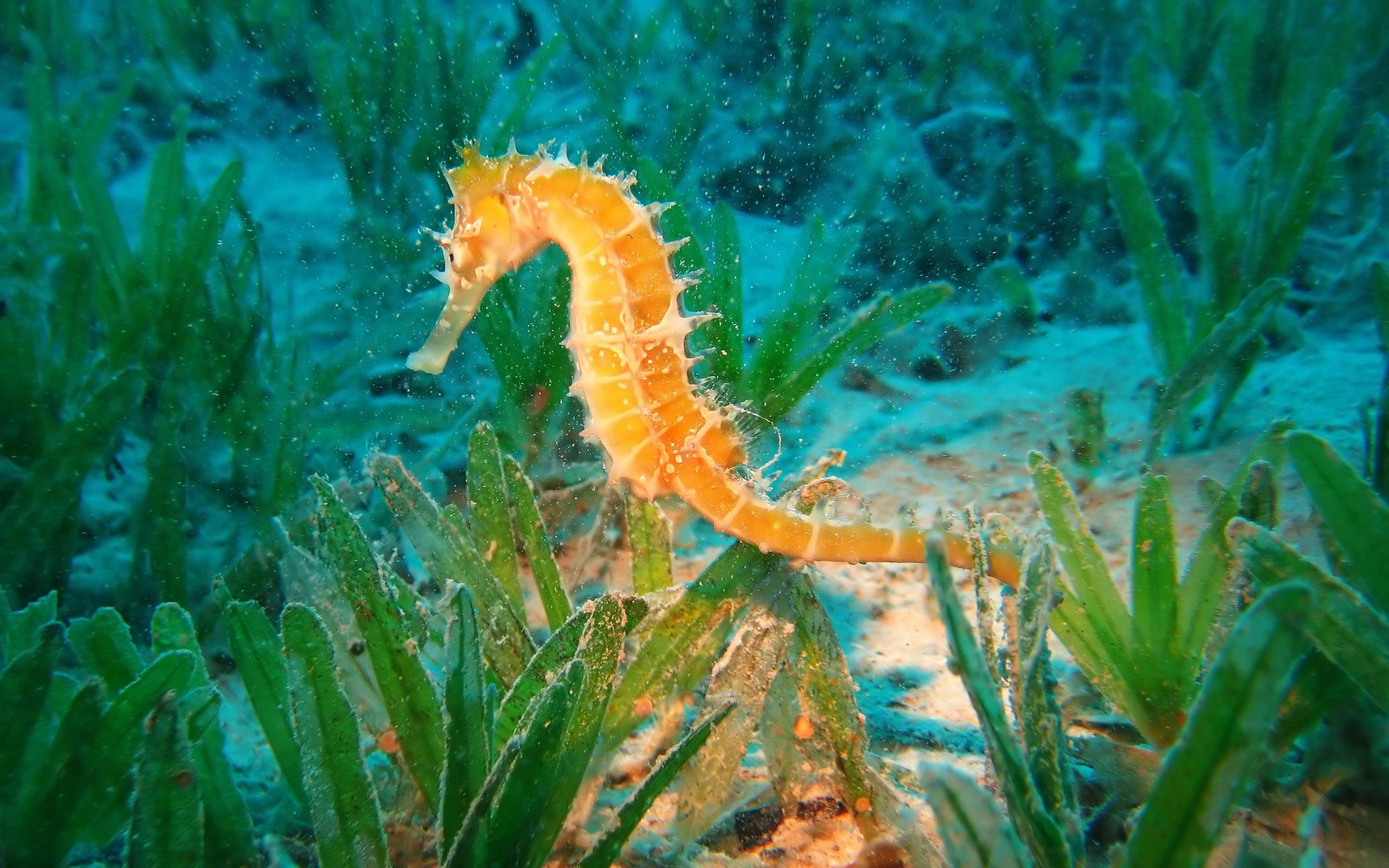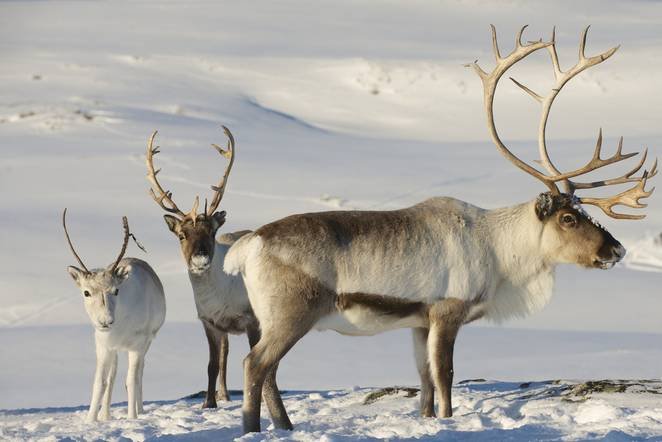(1) Sea otters always float on their backs when they eat.
(2) Frogs & fishes sleep with their eyes open.
(3) Sharks have very keen sense of hearing. It is proved by researchers that they can hear low pitch sound better below the range of human hearing.
(4) To get food, arctic fox sometimes follow the polar bear and eat their fragments. They have an outstanding sense of hearing and smell.
(5) The Kangaroo’s ancestors lived in trees. Today there are eight different kinds of tree kangaroos.
(6) Some Reindeer have knees that make a clicking sound when they walk. It helps them keep together in a blizzard.
(7) Butterflies do not have a mouth or taste buds to taste food. Sensors located at the back of their legs help them identify whether what they're stepping on is palatable.

Kangaroo
(8) Sea horses are the only animals in the entire world whose male members carry their young rather than the females. While mating, the female leaves the eggs in the small pouch of the male, thereby making it pregnant. This leaves the female free to make more eggs and reproduce at a faster rate.
(9) A turtle's gender is not determined by chromosomes but the ambient temperature of the eggs. This has become a matter of concern in light of global warming with a threat of an all-female population and extinction.
(10) Polar bears have clear fur covering a layer of black skin which helps them absorb the sun's rays better. The rays get trapped in the fur and cause luminescence which makes it look white.

Sea horse
Previous Episodes :
Part-I, Part-II, Part-III, Part-IV,Part-V, Part VI, Part VII, Part VIII, Part IX, Part X, Part XI, Part XII, Part XIII, Part XIV, Part XV, Part XVI, Part XVII, Part XVIII, Part XIX, Part XX, Part XXI, Part XXII, Part XXIII, Part XXIV, Part XXV, Part XXVI, Part XXVII, Part XXVIII, Part XXIX, Part XXX, Part XXXI, Part XXXII, Part XXXIII, Part XXXIV, Part XXXV, Part XXXVI, Part XXXVII, Part XXXVIII, Part XXXIX, Part XL, Part XLI, Part XLII, Part XLIII, Part XLIV, Part XLV, Part XLVI, Part XLVII, Part XLVIII, Part XLIX, Part L, Part LI, Part LII, Part LIII,Part LIV,Part LV,Part LVI,Part LVII,Part LVIII,Part LIX,Part LX,Part LXI,Part LXII,Part LXIII,Part LXIV,Part LXV,Part LXVI,Part LXVII,Part LXVIII,Part LXIX,Part LXX
Part-I, Part-II, Part-III, Part-IV,Part-V, Part VI, Part VII, Part VIII, Part IX, Part X, Part XI, Part XII, Part XIII, Part XIV, Part XV, Part XVI, Part XVII, Part XVIII, Part XIX, Part XX, Part XXI, Part XXII, Part XXIII, Part XXIV, Part XXV, Part XXVI, Part XXVII, Part XXVIII, Part XXIX, Part XXX, Part XXXI, Part XXXII, Part XXXIII, Part XXXIV, Part XXXV, Part XXXVI, Part XXXVII, Part XXXVIII, Part XXXIX, Part XL, Part XLI, Part XLII, Part XLIII, Part XLIV, Part XLV, Part XLVI, Part XLVII, Part XLVIII, Part XLIX, Part L, Part LI, Part LII, Part LIII,Part LIV,Part LV,Part LVI,Part LVII,Part LVIII,Part LIX,Part LX,Part LXI,Part LXII,Part LXIII,Part LXIV,Part LXV,Part LXVI,Part LXVII,Part LXVIII,Part LXIX,Part LXX
Tags : Animals, Wildlife, Science, Facts,
This Post Was Published On My Steemit Blog. Please, navigate to steemit and cast a free upvote to help me if you like my post. First Time heard about Steemit ? Click Here To Know Everything About Steemit














Comments
Post a Comment